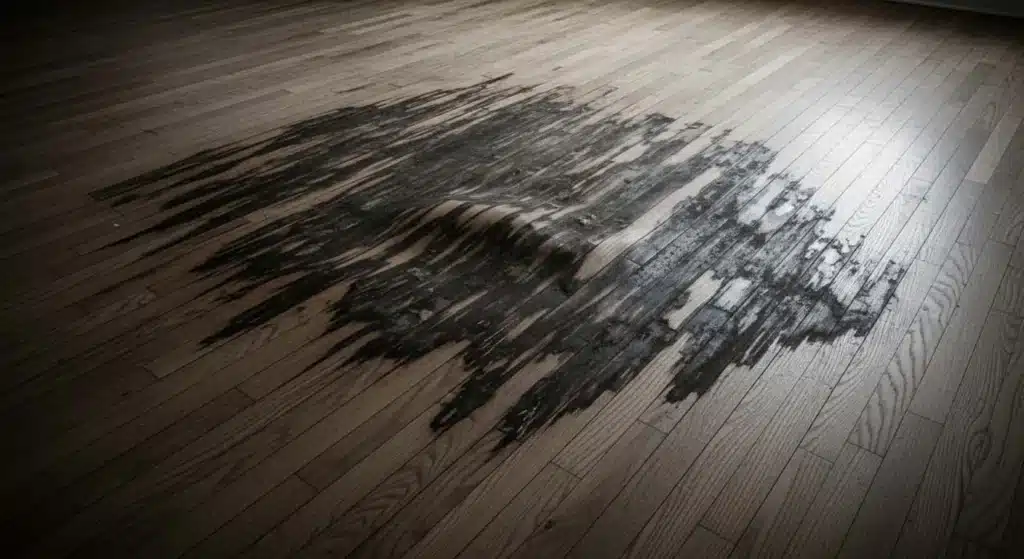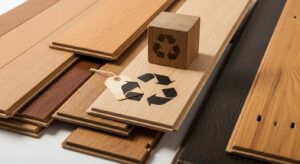When you think of luxury homes, hardwood floors are bound to make it to the top of the list. There’s no surprise there, though. They add warmth, beauty, and let’s not forget – value to your home. Hardwood floor in Brooklyn is especially popular since they matches the charm of old brownstones and modern apartments alike. But as strong as hardwood looks, it doesn’t handle water well. A burst pipe, a leaking appliance, or even heavy rain can cause serious damage to your floors before you even realize what’s happening. If you’ve found water on your hardwood floors, what do you do?
First, don’t panic. Second, don’t wait either. You can save your floor. Here’s what you need to do immediately.
How To Save Hardwood Floors That Have Been Water Damaged
If your floors get wet, every hour matters. The first 24 to 48 hours, especially, are critical. The quicker you get moving, removing water and drying the wood, the better chances you have of saving it.
Here’s what to do:
- Stop the source of water. Immediately! If there’s a burst pipe, shut off the water supply. If there’s an appliance leak, unplug.
- Start drying. You can use towels to soak up as much water as possible. A wet vacuum can really help here as well.
- Next, open windows and doors to let in fresh air. You can even turn on fans or a dehumidifier to help dry the area.
Most homeowners get impatient and resort to using high heat (like a hairdryer or heater) directly on the wood. That’s a recipe for disaster since rapid heating can make the boards crack or warp even more. Slow, steady drying is safer for the wood.
How Does Water Damage Hardwood Floors?
Here’s what most people don’t know: wood is a lot like a sponge.
It soaks up water quickly. When that happens, the boards start to swell and lose their original shape. You might notice them curving up along the edges, bulging in the center, or even lifting off the floor completely. If water sits too long, you risk damaging not just the boards but also the finish. Even worse? Mold formation underneath the floors.
What Signs to Look out For
Here are some signs that water has caused deeper damage:
- Cupping: The edges of the boards are higher than the middle.
- Crowning: The center of the boards is higher than the edges.
- Buckling: Boards lift completely off the subfloor.
- Gaps: Spaces appear between boards as they shrink and shift.
- Discoloration or dark spots: This can indicate mold growth.
- Musty smells: A sign that mold or mildew may be forming underneath.
If you notice any of these signs, matters are no longer in your hands. A professional is needed.
When You Need a Professional
While you can manage small spills yourself, major leaks or flooding require expert help.
Professionals have tools like moisture meters that check for hidden water below the boards and in the subfloor. They can also figure out if the floors can be saved through drying and refinishing or if some boards need replacing.
In Brooklyn, many older homes have uneven subfloors or gaps where water can hide. A professional will know how to spot these trouble areas and fix them properly. Trying to fix severe water damage on your own often leads to bigger problems later, like mold or structural damage.
Mistakes to Avoid as a Homeowner
When trying to fix water damage, many homeowners accidentally make it worse. Here are some mistakes you need to steer clear of:
- Waiting too long to act. Every minute water stays on the floor, it soaks deeper and causes more harm.
- Using a lot of water or harsh cleaning products to wash the floors after a leak. Instead of cleaning, this can push water deeper and damage the wood’s finish.
- Skipping professional help.
Can You Actually Salvage Your Hardwood Floors?
Whether your floors can be saved depends on how long they were wet, how much water was absorbed, and the type of wood and finish.
Solid hardwood floors have a better chance of being repaired than engineered wood, which has a thinner top layer and can’t always be sanded down.
If the boards haven’t buckled and there’s no severe mold, professionals can often sand and refinish them to restore their look. However, if the water sits for too long or causes severe swelling, some boards may need to be replaced completely.
Preventing Water Damage in the Future
- The best way to avoid this headache is to prevent water problems before they start.
- Check plumbing, appliances, and roof areas regularly for leaks. Clean gutters so rainwater doesn’t overflow into your home.
- Place rugs or mats in areas where spills are common, like near sinks and entryways. If your home tends to be humid, consider using a dehumidifier to keep moisture levels balanced.
- Finally, keep your floors well-sealed. Reapplying sealants as recommended adds an extra layer of protection and buys you precious time if water accidents happen.
Also Read: How to Protect Your Hardwood Floors from Damage
Protect Your Home with Our Trusted Help!
Your hardwood floors are an important investment that adds warmth and value to your home. Protecting them requires quick action when trouble hits and the right maintenance to prevent future damage.
Floorika Fine Hardwood is a trusted choice for hardwood flooring in Brooklyn. Our team knows exactly how to handle water damage, whether it’s small repairs, full replacements, or refinishing. If your floors have suffered water damage or you want expert advice on keeping them strong and beautiful for years to come, reach out to us today.
With the right care, your hardwood floors can continue to make your home feel warm and welcoming for decades!




